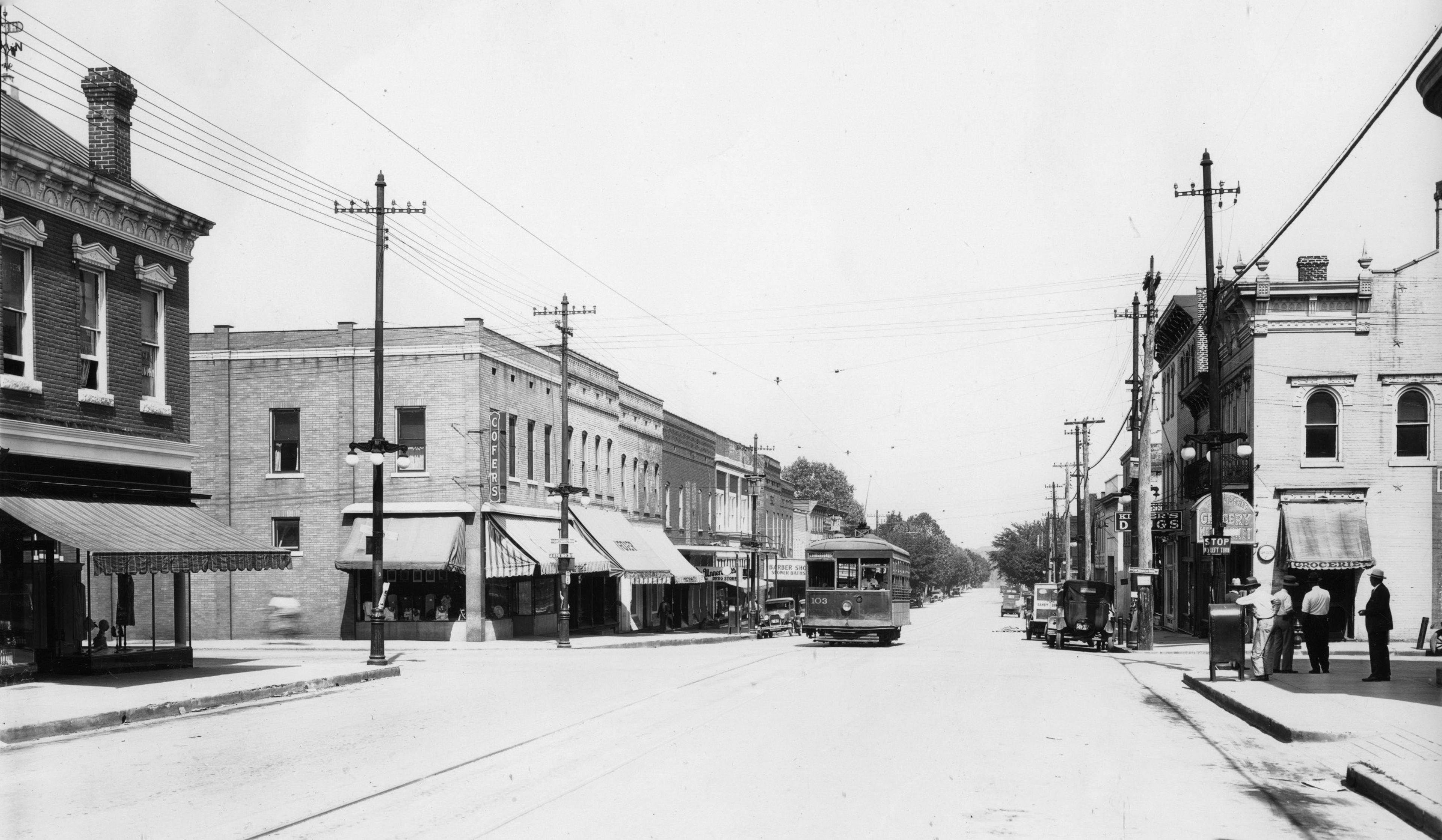One hundred years ago, on a late Thursday night in July, the guys hanging around a small eatery on Good Hope Street had too much time on their hands. In idle mischief, they hassled Melvin Miller’s son, a Black youth, who came in, ordered a sandwich and a piece of pie. The pranksters hid Miller’s pie, and told him a patrolman had taken it. Oddly, the pie incident was reported in both the St. Louis Argus and the Southeast Missourian newspapers.
The Haarig Business District is but a decaying shell today, but in 1924 was a thriving uptown destination situated along Good Hope and Morgan Oak streets, between South Sprigg and South Fountain streets. To keep businesses protected and shenanigans to a minimum, the city provided night patrolmen for Broadway and Good Hope. Ivan Robinson, formerly employed by the Memphis (Tennessee) police force, was hired in a supply position and assigned Good Hope’s night beat.
The next day, rightfully upset, Miller asked patrolman Robinson about his food, and the confrontation quickly escalated. Reports indicated the patrolman responded by slapping and kicking the youth and, when Miller ran, Robinson gave chase, firing three times with his service revolver in the direction of the fleeing youth. The young man escaped unharmed.
The early 1900s were volatile times regarding racial relations in America. Too often, everyday interactions were misinterpreted in knee-jerk racial overtones and evoked violent reactions. Escalation of ramped-up tensions resulted in unjustifiable Black lynchings, racial riots and destruction of entire Black communities. Mob lynchings took place in Waco, Texas (1916) and Memphis (1917). Race riots in East St. Louis (1921) resulted in 40 Black deaths over labor disputes. The Tulsa Massacre of June 1921 destroyed 35 square blocks of the Greenwood district, killing 36, injuring 800 and displacing 6,000 Black residents.
Local history indicates a segment of Cape Girardeau’s residents during these troubling times were purposefully working toward harmony and understanding. In fact, two days before the Good Hope incident, the Cape Girardeau chapter of the NAACP met and celebrated 16 new members, 15 of whom were white. Their expressed purpose to promote “civic righteousness and the uplift of citizens’ rights” was almost immediately called to task by the Good Hope shooting. The Cape Girardeau correspondent to The St. Louis Argus, the Rev. J.W. Curry, was the local NAACP president and pastor of St. James AME Church. Curry’s article, the first week of August 1924, questioned the actions of a “man called to be law.”
How would the community respond? It was left to wonder if the patrolman’s careless action toward a young Black man would be questioned. As more facts emerged, it was learned a prominent white business owner was also put in harm’s way. Christian Hirsch, a longtime proprietor of Cape Girardeau enterprises ranging from dry goods, butcher shop and, in 1924, was busy selling new-fangled radios. Hirsch was standing by the window of his “Cape Girardeau Battery Station” on South Frederick Street, when Robinson’s rampage sent a bullet through the window that lodged in the rear wall of the store, narrowly missing the man.
Weekend conversations likely swept the city, mixing facts with rumors and half-truths, speculating what should be done. Fortunately, the incident did not erupt into chaos. Cooler heads prevailed. Importantly, the incident was not ignored. On Monday, Mayor James A. Barks and the City Council convened an investigation of the incident. In short order, Robinson was fired and publicly denounced for his “bad judgment in firing his revolver in such a public place and without proper provocation.” Without a job, Robinson’s last known intention was to return to Memphis.
In the Argus account, the young man was never identified beyond being the son of Melvin Miller. Whether it was Walter, Roy or James, we do not know. The Millers were well-established in Cape Girardeau. Melvin was employed at the stave and barrel-making company, and with wife, Julia, parented seven children, all becoming contributing members of the working class and church community. The extended Miller family, for four or more generations, were stalwart members of Second Baptist Missionary Baptist Church.
The pie pranksters were not identified. We are left to wonder if they personally acknowledged any responsibility. Life on Good Hope, with good hope, went on.
Denise Lincoln values the region’s rich, interracial history and writes to restore awareness of individuals who contributed to our common good.










